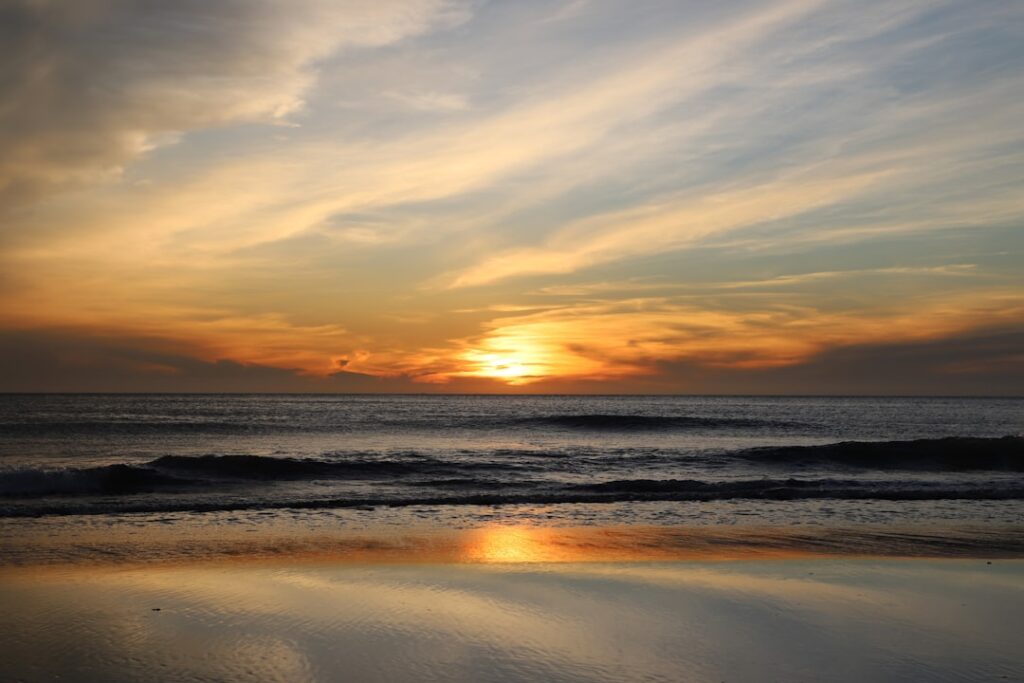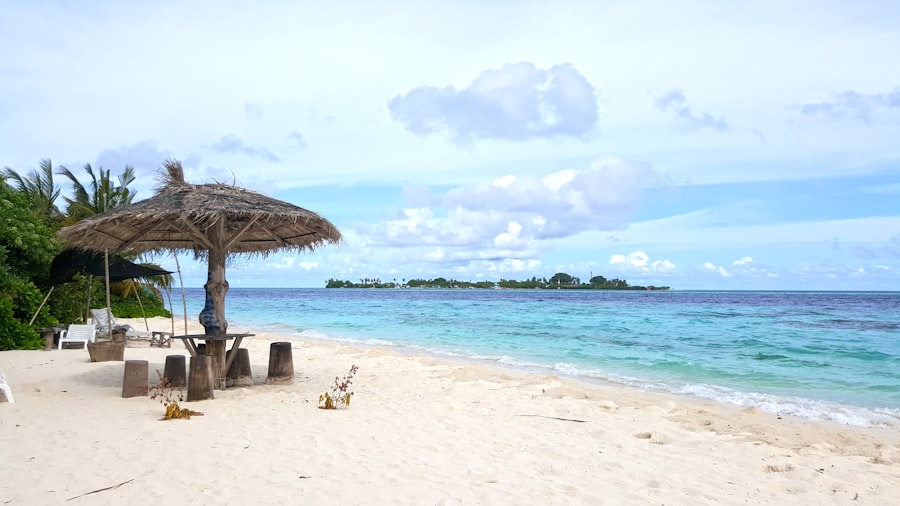
Unveiling the Mysterious World of the Ghost Crab
The ghost crab, belonging to the genus Ocypode, is a fascinating creature that inhabits coastal regions around the world. Known for its remarkable speed and elusive nature, this crustacean has captured the interest of both scientists and beachgoers alike. Ghost crabs are primarily nocturnal, emerging from their burrows at night to forage for food, which adds an air of mystery to their behavior.
Their pale coloration, which often blends seamlessly with sandy environments, contributes to their ghostly name and allows them to evade predators effectively. These crabs are not just intriguing due to their appearance; they play a significant role in their ecosystems. As scavengers and prey for various marine animals, ghost crabs contribute to the balance of coastal food webs.
Their unique adaptations and behaviors have evolved over millions of years, making them a subject of study for ecologists and marine biologists. Understanding the ghost crab’s life cycle, habitat preferences, and interactions with other species provides insight into the health of coastal ecosystems and the impacts of environmental changes.
Key Takeaways
- The ghost crab is a fascinating crustacean known for its nocturnal behavior and sandy-colored exoskeleton.
- Ghost crabs are found in sandy beaches and coastal areas around the world, with a preference for warmer climates.
- These crabs have unique physical characteristics and adaptations, such as their ability to breathe on land and their keen eyesight.
- Ghost crabs are omnivorous and opportunistic feeders, preying on small animals and scavenging for food along the shore.
- The life cycle of the ghost crab involves multiple stages, including mating, egg-laying, and the development of larvae in the ocean.
Habitat and Distribution of the Ghost Crab
Ghost crabs are predominantly found along sandy beaches and coastal dunes, where they dig extensive burrows that can reach depths of up to one meter. These burrows serve multiple purposes: they provide shelter from predators, protect against extreme temperatures, and serve as a refuge from the harsh conditions of the beach environment. The sandy substrate is crucial for their survival, as it allows them to dig and create these intricate tunnel systems.
Ghost crabs are particularly abundant in tropical and subtropical regions, with species distributed across the Atlantic, Pacific, and Indian Oceans. In terms of geographical distribution, the Atlantic ghost crab (Ocypode quadrata) is commonly found along the eastern coast of the United States, from New Jersey down to Florida, and extends into parts of the Caribbean. Meanwhile, the Pacific ghost crab (Ocypode gaudichaudii) inhabits the western coasts of Central and South America.
Their presence is often indicative of healthy beach ecosystems, as they thrive in areas with minimal human disturbance. However, urbanization and coastal development have led to habitat loss in many regions, threatening their populations and the delicate balance of their ecosystems.
Physical Characteristics and Adaptations of the Ghost Crab

Ghost crabs exhibit several distinctive physical characteristics that enable them to thrive in their sandy habitats. One of the most notable features is their coloration; their pale exoskeleton ranges from white to light beige, allowing them to blend seamlessly with their surroundings. This cryptic coloration serves as an effective camouflage against predators such as birds and larger marine animals.
Additionally, ghost crabs possess long legs that are adapted for rapid movement across sandy terrain. Their ability to sprint at speeds of up to 3 meters per second makes them one of the fastest crabs in the world. Another remarkable adaptation is their large eyes, which are positioned on stalks that provide a wide field of vision.
This adaptation is crucial for detecting predators and potential threats while they scavenge for food. Ghost crabs also have specialized gills that allow them to extract oxygen from both air and water, enabling them to survive in their intertidal habitats where they may be exposed to both environments. Their ability to tolerate varying salinity levels further enhances their adaptability, allowing them to thrive in diverse coastal conditions.
Feeding and Predatory Behavior of the Ghost Crab
| Feeding and Predatory Behavior of the Ghost Crab | |
|---|---|
| Feeding Habits | Ghost crabs are omnivorous, feeding on a variety of food including small fish, mollusks, insects, and plant material. |
| Feeding Time | They are primarily nocturnal feeders, foraging for food at night and retreating to their burrows during the day. |
| Predatory Behavior | Ghost crabs are opportunistic predators, hunting for prey along the shoreline and in the intertidal zone. |
| Hunting Techniques | They use their keen eyesight and quick movements to catch prey, often ambushing small animals in the sand. |
Ghost crabs are omnivorous scavengers, feeding on a wide variety of organic matter found on the beach. Their diet primarily consists of detritus, small invertebrates, and even plant material. They play a vital role in nutrient cycling within their ecosystems by breaking down organic matter and recycling nutrients back into the environment.
Their feeding behavior is characterized by a unique technique known as “sand sifting.” Ghost crabs use their chelae (claws) to sift through sand, searching for edible morsels hidden beneath the surface. This behavior not only aids in finding food but also helps aerate the sand, promoting healthy soil conditions for other organisms.
In addition to scavenging, ghost crabs are opportunistic predators; they will consume smaller crabs or other marine organisms if the opportunity arises. This adaptability in feeding habits allows them to thrive in environments where food sources may be scarce.
Reproduction and Life Cycle of the Ghost Crab
The reproductive cycle of ghost crabs is closely tied to environmental conditions, particularly lunar phases and tidal patterns. Mating typically occurs during the warmer months when temperatures are optimal for survival. Male ghost crabs engage in elaborate courtship displays, which often involve waving their claws and performing intricate movements to attract females.
After successful mating, females will carry fertilized eggs in a specialized brood pouch until they are ready to hatch. Once the eggs hatch, usually coinciding with high tides, the larvae are released into the ocean where they undergo several stages of development before returning to shore as juvenile crabs. This life cycle is characterized by a planktonic phase during which larvae drift with ocean currents, allowing for genetic diversity as they settle in new areas.
The entire process from egg to adult can take several months, depending on environmental conditions such as temperature and food availability.
Interaction with the Environment and Ecosystem

Decomposition and Nutrient Cycling
As scavengers, ghost crabs play a crucial role in decomposing organic matter on beaches, contributing to nutrient cycling within these environments. By breaking down detritus and other organic materials, they facilitate nutrient availability for plants and microorganisms that inhabit sandy shores.
Food Source and Predator Interactions
Ghost crabs serve as prey for various predators, including birds, fish, and larger crustaceans. Their presence in coastal food webs highlights their importance as a food source for these animals.
Habitat Engineering and Erosion Prevention
Through their burrowing activities, ghost crabs aerate the sand, enhancing soil structure and promoting healthy plant growth along dunes and coastal vegetation zones. This interaction is vital for stabilizing sandy beaches and preventing erosion.
Threats and Conservation Efforts for the Ghost Crab
Despite their adaptability, ghost crabs face numerous threats that jeopardize their populations and habitats. Coastal development poses one of the most significant risks; as beaches are transformed into resorts or urban areas, natural habitats are destroyed or altered. Pollution from plastics and chemicals can also impact ghost crab populations by contaminating their food sources or disrupting reproductive cycles.
Conservation efforts aimed at protecting ghost crab habitats have become increasingly important in recent years. Initiatives such as beach clean-up programs help reduce pollution levels on coastlines while raising awareness about the ecological significance of these creatures. Additionally, establishing protected areas along coastlines can safeguard critical habitats from development pressures.
Research initiatives focused on understanding ghost crab populations and their ecological roles further contribute to conservation strategies aimed at preserving these unique crustaceans.
Fascinating Facts and Myths about the Ghost Crab
Ghost crabs have inspired numerous myths and fascinating facts that reflect their unique characteristics and behaviors. One popular myth suggests that ghost crabs can predict weather changes; some beachgoers believe that if they see an abundance of ghost crabs scuttling about during certain times of year, it may indicate an impending storm or change in weather patterns. While there is no scientific basis for this belief, it highlights how closely people observe these creatures in relation to their environment.
Another intriguing fact about ghost crabs is their ability to communicate through body language and claw displays. Males often engage in competitive displays where they wave their claws at one another to establish dominance or attract mates. This behavior not only showcases their physical prowess but also serves as a fascinating example of non-verbal communication among crustaceans.
Furthermore, ghost crabs have been observed engaging in complex social interactions within their burrow systems, indicating a level of social structure that is not commonly seen in other crab species. In summary, ghost crabs are remarkable creatures that embody resilience and adaptability in coastal ecosystems. Their unique physical characteristics, feeding behaviors, reproductive strategies, and interactions with their environment make them an essential component of beach ecosystems worldwide.
As we continue to study these fascinating animals, it becomes increasingly clear that protecting their habitats is vital not only for their survival but also for maintaining the health of coastal environments as a whole.
If you want to learn more about the Ghost Crab (Ocypode quadrata), you should check out the article on Animal Kingdom’s website titled “10 Fascinating Facts About Ghost Crabs.” This article provides interesting information about the behavior, habitat, and unique characteristics of these fascinating creatures. You can read the full article here.
FAQs
What is a ghost crab?
A ghost crab, also known as Ocypode quadrata, is a type of crab that is commonly found on sandy beaches in the United States, the Caribbean, and South America.
What do ghost crabs look like?
Ghost crabs are small in size, typically measuring around 2 inches in width. They have a pale coloration, which allows them to blend in with the sandy beaches where they live, hence the name “ghost” crab.
What do ghost crabs eat?
Ghost crabs are omnivorous and feed on a variety of foods including small fish, insects, plant material, and detritus. They are also known to scavenge on dead animals washed up on the beach.
How do ghost crabs reproduce?
Ghost crabs reproduce by laying eggs in burrows dug in the sand. The female crab carries the fertilized eggs with her until they are ready to hatch, at which point she releases them into the ocean.
Are ghost crabs harmful to humans?
Ghost crabs are not harmful to humans and are generally shy and will avoid contact with people. However, they may pinch if they feel threatened, so it’s best to observe them from a distance.
What is the role of ghost crabs in the ecosystem?
Ghost crabs play an important role in the ecosystem as they help to control the populations of small animals and insects on the beach. They also help to aerate the sand as they dig their burrows, which can benefit the growth of beach vegetation.